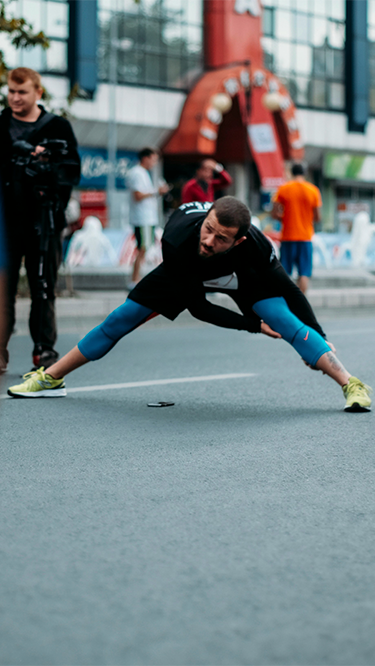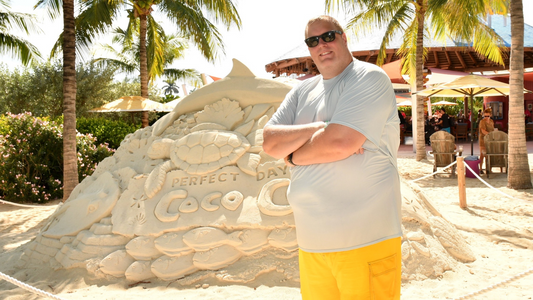

What Can You Do to Improve Your Flexibility?
When you hear “flexibility” your mind might immediately go to gymnastics or yoga, which are disciplines where flexibility is key. However, flexibility is important to all types of fitness and exercise.
Flexible athletes generally perform better — and not just because they are more “loose.” Flexibility is key to having a good range of motion and staying resilient in the face of injury. Many injuries occur because muscles are tight and inflexible, making strains and sprains more likely.
When you are inflexible, structures in and around your joints will tighten and shorten, according to VeryWell Health. Athletes and fitness enthusiasts will want longer, looser muscles to be competitive and continually improve in their sport.
Improving Flexibility
If you want to become a better athlete or improve in your sport, focusing on improving flexibility can help you make progressive strides. And improving flexibility doesn’t mean just static stretching, either.
Building your flexibility means developing a dynamic regimen of exercise and stretches to support your current training and fitness goals. When building flexibility, don’t measure your progress by if you can touch your toes. That’s not important. Instead, you should start to feel like your movements are more fluid and you feel more comfortable in your body when exercising.
Giving your body the care it needs through building flexibility will only help you in the long run.
Ideas For Improving Flexibility
By building in a variety of flexibility exercises into your fitness routine you can supercharge your flexibility and feel yourself get better faster.
Dynamic Stretching
Dynamic stretching is really important before working out. This type of stretching helps your muscles get warmed up before starting exercise. When doing dynamic stretches, your focus should be getting your body through its full range of motion and activating the key muscles you will be using during your workout.
Great dynamic stretches include “ice cream” scoops, toy soldiers, carioca, lunges and lunges with a twist, high knees, and butt kicks.
Once you’ve gone through your dynamic warm-up, you are ready to get started and perform well during your workout.
Static Stretching
Static stretching is best done after a workout as part of a cool down. With static stretching, you are helping your muscles recover from a workout and make your day after better by flushing the muscles so you aren’t as sore.
There are a lot of misconceptions about static stretching, especially because when most people think of flexibility, they go straight to static stretching.
When choosing static stretches, be sure you are picking stretches that make sense for the workouts that you did and be mindful of your own limits. Like we said earlier, an arbitrary goal of touching your toes doesn’t make sense here. You want to stretch to your limit, but not beyond it. If static stretching does hurt, it should be a good hurt, not a sharp shooting pain.
It’s also important to remember that static stretching should be a slow process. In fact, a 2023 study in the International Journal of Exercise Science, found that longer stretching times led to “significant increases in flexibility” and the longer someone stretched, the more flexible they became.
If you are not flexible, you may want to start static stretching with 15 second holds before working your way up to 30 seconds or even a full minute to get the most benefit out of your static stretching.
Regardless of your chosen type of exercise, there are some stretches that surpass the boundaries of different sports. Stretching your hamstrings, quads, and calves is almost always a good idea. These are key muscles in most forms of exercise. But don’t forget the upper body! Taking time to focus on the chest and shoulders can help open you up and be ready for activity.
Building a Flexibility Routine
As you build flexibility training into your routine, you will start to notice a difference in your overall performance. Starting with dynamic stretches and ending with static stretches in every workout will help you improve your flexibility.
Also consider building flexibility into your rest days as part of active recovery. This is a great way to consistently improve your flexibility. Spending at least fifteen minutes on your off days on gentle stretches to release tightness and take care of your body through other flexibility practices like foam rolling, myofascial release, and massage is also beneficial.
Have confidence that you now know what you can do to improve not only your flexibility, but your athletic performance and progress toward your fitness goals. Be sure to let the ZOZOFIT app show you how your shape is improving when you scan yourself using your smartphone.

![zf-w-[168px] zf-h-[40px]](http://zozofit.com/cdn/shop/t/15/assets/logo-desktop.png?v=117713855448369080381753069598)



